Welcome to one of the most active flamenco sites on the Internet. Guests can read most posts but if you want to participate click here to register.
This site is dedicated to the memory of Paco de Lucía, Ron Mitchell, Guy Williams, Linda Elvira, Philip John Lee, Craig Eros, Ben Woods, David Serva and Tom Blackshear who went ahead of us.
We receive 12,200 visitors a month from 200 countries and 1.7 million page impressions a year. To advertise on this site please contact us.
|

|
|
Some Alegrias questions
|
You are logged in as Guest
|
|
Users viewing this topic: none
|
|
Login  | |
|

  
srshea
Posts: 833
Joined: Oct. 29 2006
From: Olympia, WA in the Great Pacific Northwest

|
 RE: Some Alegrias questions (in reply to John O.) RE: Some Alegrias questions (in reply to John O.)
|
|
|
quote:
ORIGINAL: John O.
We seem to be the only two interested at the moment though...
No way, Jose! I’m definitely interested too, I’m just 90% clueless about how all this works.
I just started working on an alegrias with a dancer the other night, and, as I said, I’m pretty clueless. Her English isn’t super-strong, and my Spanish is far worse, so there was a lot of just kind of staring at each other, not really sure how to communicate what was necessary to make it all work properly (She’s also used to working with recorded music and doesn’t have a lot of experience interacting with a guitar player). She’s going to give me a dvd of her performing a specific bit of choreography, and I’m going to use that to just copy, and learn by rote, the basic structure of what she’s used to working with. Hopefully, somewhere in this process, I’ll start to figure out how all these various parts of the dance fit and work together, when/where/why/etc.
Probably not the ideal way to learn all this stuff, but I’m playing the hand that’s been dealt to me at the moment. In the past most of this kind shop-talk about accompaniment specifics has gone in one ear and out the other, but I’m hoping and thinking that some of it will start to sink and make a little since now that I’m getting an opportunity to actually DO some of this stuff rather than just looking at it or reading about it…..
So please do keep it up, guys. Some of us are out here listening, even if we don’t have anything to add to the discussion.
|
|
|
|
REPORT THIS POST AS INAPPROPRIATE |
Date Jan. 17 2009 15:00:32
 |
|

   
c
Posts: 320
Joined: Nov. 20 2005
From: manitoba, canada

|
 RE: Some Alegrias questions (in reply to John O.) RE: Some Alegrias questions (in reply to John O.)
|
|
|
Alegrias for dance
entrada, letra, remate, collatia,llamada, buleriasdesplante, llamada, silencio,escobia ending in counter time,llamada, bulerias, end with llamada
could be two letra
c
|
|
|
|
REPORT THIS POST AS INAPPROPRIATE |
Date Jan. 17 2009 15:04:34
 |
|

   
John O.
Posts: 1723
Joined: Dec. 16 2005
From: Seeheim-Jugenheim, Germany

|
 RE: Some Alegrias questions (in reply to c) RE: Some Alegrias questions (in reply to c)
|
|
|
quote:
entrada, lertra, remate, collatia,llamada, buleriasdesplante, llamada, silencio,escobia ending in counter time,llamada, bulerias, end with llamada
I'd love to see these kind of clear cut answers for the other palos too! Like I said: accompanyment section! 
_____________________________
Don't sweat the petty things and don't pet the sweaty things
|
|
|
|
REPORT THIS POST AS INAPPROPRIATE |
Date Jan. 17 2009 15:08:27
 |
|

   
Estevan
Posts: 1936
Joined: Dec. 20 2006
From: Torontolucía

|
 RE: Some Alegrias questions (in reply to Pimientito) RE: Some Alegrias questions (in reply to Pimientito)
|
|
|
quote:
I can't be the only one here thats heard that "triti tran tran" story. Has anyone else heard something similar?
Pretty sure I read it here, some time ago.
The 'tiriti tran tran tran' in alegrías, however it came to be, is obviously very light-hearted and fits perfectly.
On the other hand, some siguiriyas start with a 'tiri-ti-ti...' which, in that context of course, has a totally different feeling. Maybe that one is related to the 'Tirititando de frío' - perhaps trembling with emotion, rather than cold. ~ ?
 (how many of these would you like, Pim?) (how many of these would you like, Pim?)  
p.s.
quote:
AFAIK that's just like "tum dee dum tee dum"
Sure. And it reminds me of another one. Recently Pimientito (and others) posted something about the connections between Andalusian dances and the English Morris Dance. I've noticed evidence of a historical cultural exchange, because in certain tangos you can hear a refrain that is clearly derived from the Olde Englishe "hey, nonny nonny".
 
_____________________________
Me da igual. La música es música.
|
|
|
|
REPORT THIS POST AS INAPPROPRIATE |
Date Jan. 18 2009 8:28:46
 |
|

   
Ricardo
Posts: 14861
Joined: Dec. 14 2004
From: Washington DC

|
 RE: Some Alegrias questions (in reply to Pimientito) RE: Some Alegrias questions (in reply to Pimientito)
|
|
|
quote:
ORIGINAL: Pimientito
I'm a bit shame faced to be asking nerdy questions but I realised I have a few gaps in my knowledge that some of you dancers (Yes, you Ailsa) or guitarists who accompany dancers might be able to help with.
Ok, lets say you are accomanying a straight forward Alegrias and the order would be for example an entrada followed by first letra, then possibly a bit of paseo and then maybe a second letra, maybe not. Then a subida finishing on a llamada. Next is the silencio followed by the castellana followed by escobilla and building up to buleria.
Question 1.
The "triti triti tran tran tran" letra is supposed to be have come from a singer who forgot the letra one day and just made it up on the spot, and this got incorporated into the Alegria. Is that just one of those stories or isthat acredited to any one particular singer ? If so, who and when?
Question 2.
The silencio is technically a silence. The guitar part is callad campanas to imitate the striking of a bell. Does that mean that the companas is a later "invention"? When did the companas regularly start to be incorporated as an accompaniment to the silencio? Again can this be acredited to a particular artist?
Question 3
Why is the Castellana called the Castellana?
For 1, Dont know but someone told that story like Jacinto or estela or someone. Check the archives, cause I dont' really care to be honest. And you know how I feel about anecdotal history vs recordings. So you know, that is the cantinas melody that is used often as the colatilla for a letra of alegrias. There is a different kind of colatilla for romeras, but I hear that same one used for mirabras, etc. I have no problems if a singer uses one of those for alegrias too.
2. Silence comes from it not being noisy compas and stomping I assume. Companas, don't know why. Sorry. Perhaps a guitarist once played some harmonics or imitated a bell melody. I have heard dancers call this section "paseos" too.
3. Typically the cantinas is done here, the collatilla melody I talked aobut in 1. Not tir tiri but with the actual lyrics. My guess is there is one that has "castellana" in the lyric of the cantina/colatilla, and hence the name stuck for some dancer. Again who it was, I don't really care, but that trivia is probably available somewhere.
_____________________________
CD's and transcriptions available here:
www.ricardomarlow.com
|
|
|
|
REPORT THIS POST AS INAPPROPRIATE |
Date Jan. 18 2009 13:40:42
 |
|

   
mark indigo
Posts: 3625
Joined: Dec. 5 2007

|
 RE: Some Alegrias questions (in reply to Pimientito) RE: Some Alegrias questions (in reply to Pimientito)
|
|
|
quote:
I'm a bit shame faced to be asking nerdy questions
the more nerdy questions you ask, the less shame-faced i feel about asking nerdy questions!  and my knowledge is full of holes and my knowledge is full of holes  isn't that what the foro is for, asking nerdy questions? isn't that what the foro is for, asking nerdy questions? 
i didn't know that about the origin of the quote:
"triti triti tran tran tran" i assumed it was just the alegria equivalent of "aye-ee" in other palos/cantes, but as there's a bit more to it, ie it's several lines, the story you heard makes sense, i would love to know the true origin
quote:
I've understood Silencio to mean no singing - just the guitar.
that makes sense to me, though i've understood it to mean the dancer doesn't do any (loud) footwork (and the marking seems fairly subdued), hence "silencio" - maybe it's both?
and i thought it was called "Campanas" because that describes the typical guitar work, rather than it's called "Bells" (campanas meaning bells) and the guitar then does something that imitates that....
(does that make sense? i mean the guitar played something, and the name came after to describe what the guitar sounded like, rather than the name came first and then the guitar did something to sound like the name)
and/but it's not like those opening grace note tremelo-pulgar downstrokes are unique to silencio in alegrias - they are often used in solea F-E-F on beats 7-8-9 as well as trad beginning of granaina, and in taranta etc. not sure if that backs up what i put above or works against it....
quote:
Why is the Castellana called the Castellana?
i have also heard the Castellana called "Paseo De Castilla" so maybe that's something to do with it.... maybe the origin of that section is it was a bit of some dance from Castilla that got incorporated.... just an idea, i'd love to know the actual reason
quote:
the guitar is "tapeada"
i always wondered what the the right term for; quote:
playing rhythm only, on damped strings was - someone was trying to tell me it was called something which sounded like "T'Pau" to me (80's pop group), which i doubted, seeing as i don't think he knows anything much more than me.... but i think he picked it up in spain, so i don't know.... is that how it's pronounced (t'pow)? or is it more like "tapeá"? a bit like "soleá"?
quote:
The subida is not particuler to Alegria. it occurs in siguirilla, tangos etc and is simply a footwork section that speeds up
the term "subida" is one i know and use, and also understand it to mean the "speeding up" section (usually in the footwork) in any dance, alegria, solea, tientos, taranto etc before going into the macho/remate of bulerias/buleria/tangos/tangos respectively
there's another one, do you use "macho" or "remate" or some other term for, for example, a buleria at the end of a solea or a tango at the end of a tiento?
quote:
collatia never heard this one, any idea how it translates?
quote:
I'm interested to but have no dance class to play for!!
stu, the best thing to do is find a dance class that already has a guitarist who will let you "sit in" with them. just find the nearest dance class, contact the teacher and ask if you can get in touch with the guitarist to ask, or just go along either before or after the class and ask the guitarist. maybe he will give you a few lessons and teach you any specifics of the choreography, or just let you play along and pick it up that way.
quote:
Maybe you mean cierres?
AFAIK a remate can consist of multiple llamadas. Or was it vice versa?
i would love to know the specific definitions of these (preferably with sound clips  ). what i do know is, when the dancer goes "bang, bang, bang" or "bangada,bangada,bang" or something like that, i do the same on the guitar, and when they do the big stop at the end of 1, 2 or 3 compases i stop to - and i call it a "llamada" or "call" ). what i do know is, when the dancer goes "bang, bang, bang" or "bangada,bangada,bang" or something like that, i do the same on the guitar, and when they do the big stop at the end of 1, 2 or 3 compases i stop to - and i call it a "llamada" or "call"
but i also know that the "llamada" is the "call" for the singer to come in, often after a falseta or something, and that "cierre" means "close" so is that at the end of something, like a piece of footwork, when the dancer wants to "close" that for the singer to do another letra?
would really like to get my head round these terms, which are mostly names for things i already do, but i think it would tighten up my ability learn new choreographies and to anticipate and generally know what's coming next if i had these terms sorted, like i could percieve the sections better and that sort of thing
phew, long post, but this thread is just too interesting
btw i'm doing the alegria course next month in london that Ailsa has been advertising, so if we don't have answers on here by then i'll ask TC
|
|
|
|
REPORT THIS POST AS INAPPROPRIATE |
Date Jan. 18 2009 13:58:34
 |
|

   
Ricardo
Posts: 14861
Joined: Dec. 14 2004
From: Washington DC

|
 RE: Some Alegrias questions (in reply to mark indigo) RE: Some Alegrias questions (in reply to mark indigo)
|
|
|
quote:
ORIGINAL: mark indigo
oh, hello, while i was tapping out that really long post, and thinking "we probably need Ricardo or Jason here" Ricardo was posting!
could you tell me what this term means please?
quote:
colatilla
i agree with you that the origins of these things don't really matter, it's just a sort of curious side interest, but the terminology i find useful, especially if a dancer asks for something - it helps if i've heard of it!
Colatilla, the little tail, the little ending you stick to alegrias letras, or romeras, etc. They dont' need to relate to the Alegrias letra. Example Camaron did all the time:
que a mi me vio de nacer
bendita sea la tierra
que a mi me vio de nacer
ay cien años que yo viviera
simpre la recordare
Thats the end of the letra. Then the colatilla you stick on, the same melody as tiri tiritran:
yo puege tiro un al aire
cayo la arena
confienza en el hombre
nunca la tengas
nunca la tengas hermana
nunca la tengas
yo prego tiro el aire
cayo la arena
So he can stick a different "colatilla' there if he wants. Like "con la luz del cigarro..." etc. And Casellano section just does that last part. The alegrias letra and it's colatilla are both considered "cantiñas", just we have those specific names. In a cante performance some singers might mix in Romeras, or not do the colatillas, etc, and the performance might get a title "cantinas" or "alegrias" etc. Usually, if you just do Romeras with some colatillas, it should be called "romeras". Anyway, that's the whole labeling of cantes problem we have talked about before.
The section of foot work you do with just apagado muted strumming, is called the "solo de pies" or "palo seco" and dancers tell the guitarist "tapeao". Like "zapateao" is footwork.
Ricardo
_____________________________
CD's and transcriptions available here:
www.ricardomarlow.com
|
|
|
|
REPORT THIS POST AS INAPPROPRIATE |
Date Jan. 18 2009 14:41:01
 |
|
Guest

|
 RE: Some Alegrias questions (in reply to Pimientito) RE: Some Alegrias questions (in reply to Pimientito)
|
|
|
quote:
1.I'm not trying to argue here. I heard this story before I joined foroflamenco. I believe the triti tra tran is acredited to some singer, I just wondered if anyone knew who it was. If you don't care who it was then fine. I'm asking because a radio station is looking for the answer.
Ignacio Espeleta.
|
|
|
|
REPORT THIS POST AS INAPPROPRIATE |
Date Jan. 19 2009 1:12:37
 |
|
 New Messages New Messages |
 No New Messages No New Messages |
 Hot Topic w/ New Messages Hot Topic w/ New Messages |
 Hot Topic w/o New Messages Hot Topic w/o New Messages |
 Locked w/ New Messages Locked w/ New Messages |
 Locked w/o New Messages Locked w/o New Messages |
|
 Post New Thread
Post New Thread
 Reply to Message
Reply to Message
 Post New Poll
Post New Poll
 Submit Vote
Submit Vote
 Delete My Own Post
Delete My Own Post
 Delete My Own Thread
Delete My Own Thread
 Rate Posts
Rate Posts
|
|
|
Forum Software powered by ASP Playground Advanced Edition 2.0.5
Copyright © 2000 - 2003 ASPPlayground.NET |
0.109375 secs.
|


 Printable Version
Printable Version



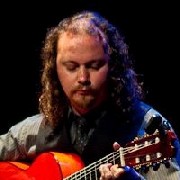


 I learned it was just the singer imitating the sound of a guitar to warm up, like in the Garrotín.
I learned it was just the singer imitating the sound of a guitar to warm up, like in the Garrotín.  in any case a group I played with once discussed this seemingly simple topic for quite a long time.... Later we agreed it can be either way and you can usually catch it on time.
in any case a group I played with once discussed this seemingly simple topic for quite a long time.... Later we agreed it can be either way and you can usually catch it on time. 




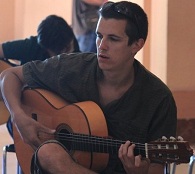

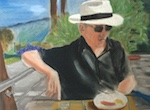
 s
s 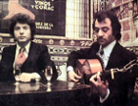


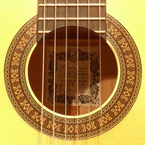

 New Messages
New Messages No New Messages
No New Messages Hot Topic w/ New Messages
Hot Topic w/ New Messages Hot Topic w/o New Messages
Hot Topic w/o New Messages Locked w/ New Messages
Locked w/ New Messages Locked w/o New Messages
Locked w/o New Messages Post New Thread
Post New Thread